Cassie Jaye’s 2019 Keynote Speech
Last month, I was invited by the Canadian Association For Equality (CAFE) to deliver an hour-long Keynote Address for the 2019 MoMENtum Conference held in Toronto August 2-3, 2019. This is the largest Canadian conference dedicated to men’s issues.
CAFE just released the video of my Keynote Speech:
Some prefer watching videos, others prefer reading. For you readers, I figured I would post my entire Keynote Speech here. It’s broken down into seven parts:
Part I: Introduction
Part II: The Red Pill Movie
Part III: Stripping Away The Conditioning
Part IV: Respecting Other’s Journeys
Part V: An Instagram Story
Part VI: Changing Hearts And Minds
Part VII: Finding Common Ground
——-
PART I
Introduction / The Purpose, Goals and Tone of the Conference
We are all here today because we are all trying to make sense of this complex problem we find ourselves in and hopefully find solutions that work.
This conference is not just about male bashing in the media. It’s not a conference about male victims of domestic violence, or male victims of rape. It’s not a conference about the educational system, the family court system, the lack of reproductive rights for men including issues like paternity fraud, wrongful paternity, and forced child support. This is not a conference about sentencing disparity, homelessness, workplace deaths, war deaths, the war on masculinity, false allegations, suicide rates, gynocentrism or misandry. I could list at least a dozen other topics that this conference is not, because this conference is about all of these things.
What all of these issues have in common, besides predominantly or exclusively affecting men and boys, what these issues have in common is the universal struggle to be openly discussed, let alone be met with compassion, empathy, and a willingness to make a change.
That is why CAFÉ, the Canadian Association for Equality, does the work they do – not only do they provide services for the forgotten, but they also provide a platform for the research and a space for productive dialogue that examines these issues head on.
Believe it or not, right now, in the pursuit of gender equality, we are still in an AGE OF DISCOVERY. In an age of connecting the dots and analyzing information from multiple angles.
Some people say they have it all figured out. Politicians, academics, Hollywood elites, social media moderators… you know the types. They will tell you about the Patriarchy and how it harms everyone and that smashing the Patriarchy will solve all of our problems. They will tell you about toxic masculinity, and they will tell you about your own internalized misogyny, that is if you self-identify as a woman.
And there are theories and languages established by non-feminists as well. For example, Dr. Warren Farrell’s theory of Male Disposability, that men’s lives are more expendable in the eyes everyone, men and woman alike. Many feminist scholars reject this theory of Male Disposability, or respond to it in their framework of Patriarchy Theory, saying this is yet another example of how the Patriarchy harms everyone.
Another counter to feminist theory is Tim Goldich’s theory that “it all balances out”. He says that for every women’s issue there is a correlating but opposite men’s issue and we should just call it a draw, agree to call it quits on this “Who has it worse?” competition. He says that what’s preventing a truce is our widespread, institutionalized, and well-funded ‘Gender Belief System’, which includes by and large the acceptance of Patriarchy Theory, that men oppress women today and always have.
A research scientist once told me, “Too many people work hard to prove that their theory is right, when what they should do is try to prove their theory wrong. That’s when they’ll see how strong their theory is.”
This weekend, let’s be both open-minded and critical. Let’s be both analytical of other’s arguments and analytical of our own long-held beliefs. Let’s admit to ourselves that there’s always more we can learn. And perhaps most importantly, let’s always be respectful.
PART II
The Red Pill Movie
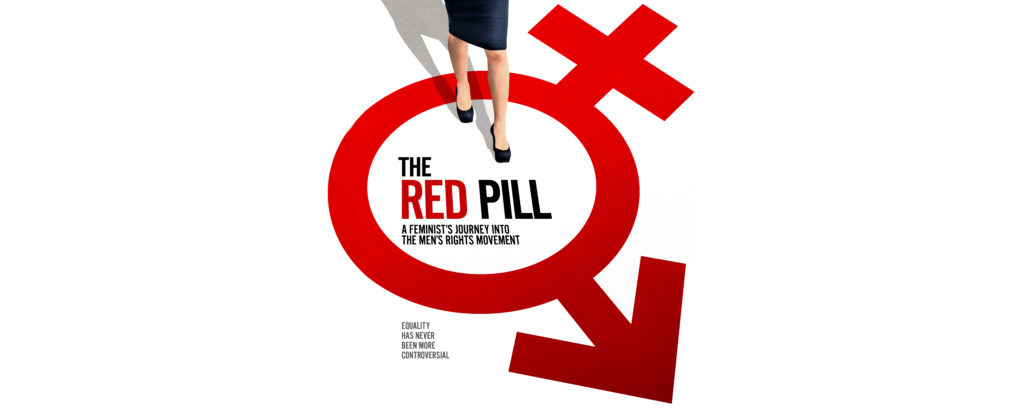
By a raise of hands, who has seen The Red Pill documentary?
Now, who has NOT seen The Red Pill movie?
For those of you who haven’t seen it, I’d like to explain my background to give you some context.
I started documentary filmmaking over 10 years ago in 2008. The topics I studied and reported on the most were women’s issues. My focus was predominantly on reproductive rights, such as; abortion, teen pregnancy, single motherhood, rape and other forms of sexual abuse towards women, but I also made films that promoted gender equality for women in STEM education, and I made films promoting LGBT rights, such as same-sex marriage, same-sex adoption, bringing awareness to LGBT youth suicide rates, and the overturning of “Don’t Ask Don’t Tell” and the “Defense of Marriage Act”.
I was very much embedded in the gender political world, but operating strictly in a bubble that supported liberal feminist views.
Considering that I started filmmaking at 21 years old, and won 10 film festival awards within the first few months of releasing my first film, I was doing quite well. I had many filmmaker friends in Los Angeles who were shocked by the immediate praise and support that I got for my very first film, Daddy I Do.
Daddy I Do was about the importance of comprehensive sexual education in schools with a strong focus on the negative impact that Abstinence-Only Programs had on women and girls. That film was widely respected by feminist publications such as Bust magazine, Feministing.com, and RH Reality Check, as well as promoted by feminist influencers such as Jessica Valenti and Amanda Marcotte.
Even Planned Parenthood fully funded a screening tour of the film and I was flown around to do Q&As.


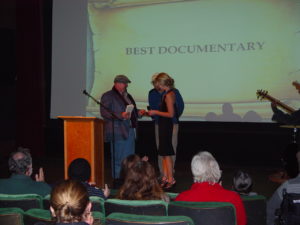
(Idyllwild International Festival of Cinema, 2010)

I believed I found my calling, I was so passionate about women’s issues, and for the record, I still am today, but I have a much more nuanced understanding of the big picture, which I will discuss later.

Fast forward to 2013, I already had directed a dozen films and commercials by that point and I was looking for my next feature film project to sink my teeth into. At the time, the term ‘Rape Culture’ was flooding my social media feed. Everyone from mainstream news to the tiny bloggers were all saying that we definitively live in a Rape Culture, where raping women is pervasive and normalized. Clearly my feminist antennas were up because this topic was in my filmmaking wheelhouse.
I decided right then: I’m going to make a film on Rape Culture.
To be honest, my research didn’t start with the question, “do we live in a rape culture?”, which I now know is what it should have started with. But as a devout feminist who personally knew too many women who had been sexually abused, I had no reason to question major news outlets like The New York Times and CNN proclaiming that we live in a Rape Culture.
Also, at that time the two biggest news stories were of a 23-year-old girl that was gang raped on a bus in Delhi, India, she died in the hospital from her wounds, and the Steubenville, Ohio rape case where a 16-year-old girl was videotaped being raped while incapacitated.
So, rather than looking to prove Rape Culture theory wrong, I believed it was right and instead I searched for the root cause of this problem.

In my late night Google searches, I read academic papers, op-eds, feminist blogs and the comments sections hoping to get clues of who was perpetuating this Rape Culture. Sure enough, feminists revealed to me who the enemy was….dun nun nun nun! Men’s rights activists, otherwise known as MRAs.
This is when my life path took a drastic turn. Instead of making a film on Rape Culture, which I felt would have been far too depressing, I redirected my course to exposing Men’s Rights Activists for what they truly were.
In hindsight, I do believe I accomplished that. Although the outcome turned out to be very different than I expected.
For three and a half years, from March 2013-October 2016, I went on a journey that changed my life forever and that journey is chronicled in The Red Pill documentary (available on Amazon Prime, iTunes, Google Play, YouTube, Vimeo, Vudu, TubiTV, and many other platforms).
You can also watch hours of the raw interview footage on my YouTube channel, just search “The Red Pill: Raw Files”.
And I even did a TEDx Talk about my journey making The Red Pill, which has over 4 million views on YouTube!
Since the film’s release, I’ve done about a hundred interviews, which you can also see on YouTube.
Some of them are quite entertaining and revealing.
Every day my perspectives continue to evolve and today I’d like to share some new insights I’ve never shared before.
Afterwards you are free to ask me any questions you’d like.
PART III
Stripping Away the Conditioning
About a month ago, someone who worked on The Red Pill contacted me telling me he was removing his film credit off of IMDb.com, as well as off his website and resume.
Now, this was someone who played a fairly large part in the production of the film. We worked closely together for months. He’s not someone who became involved in the film because of the topic, he actually didn’t know anything about the men’s movement before working with me, but I needed an element completed for the film and we had mutual friends, so I hired him.
When he emailed me telling me that he was removing his credit, he told me that he is so proud of the work he did on the film and he defends the film to anyone who asks, but he was currently in the process of applying for new work and he wasn’t getting many interviews, and when he did get interviews, the potential employer would always question him about The Red Pill being on his resume, in a clear tone that it was a reason NOT to hire him. He realized that maybe he wasn’t getting as many job interviews because of having worked on the film.
I wrote back to him saying that I completely understood where he was coming from because I struggle with it, too. I have all this Red Pill merchandise (hats, t-shirts, hoodies) and for the 3 years I’ve had them, I can’t get myself to wear them out in public! I live in the San Francisco Bay Area and have learned to avoid talking about my film because it instantly upsets the majority of people I interact with. I also avoid wearing the merchandise because the term “Red Pill” has come to mean something very hateful to many people who only follow what the mainstream media says.
I’ll be the first to admit that the title, The Red Pill, can be off-putting to many. I get it because around May and June 2017, the term’s popularity in the mainstream media skyrocketed, but it was almost always being associated with fear-mongering labels like racist, misogynist, bigot, homophobic and white supremacist.
Just to show you what I’m talking about, here is Google Trends’ backlog which analyzes the popularity of a term. This graph shows the red pill’s popularity from 2004 (which is when the Google Trends platform first launched) up until 2017.
The first spike happened in May 2017, and then the next spike happened in June 2017.
Just two months PRIOR to that terms’ spike in the media, my film, The Red Pill was released worldwide online on March 7, 2017. Do I think the two are linked? Absolutely.
There are a few platforms where I could monitor the film’s success, one was Google Play and the other is YouTube.
The day after the film’s release, it was the #1 top selling documentary on Google Play!
It was still #1 a month later.
And even 6 months later!
As for YouTube, the only other platform where I could watch its progress…
It was #4 of ALL movies! This was May 2017. You can see Guardians of the Galaxy was #1, then Moana, then a Star Wars movie, and then The Red Pill.
I thought it couldn’t get any better than that, until someone from Canada tweeted this:
The Red Pill was #1 in Canada, ahead of Moana and Star Wars’ Rogue One.
This is unheard of in the documentary world, to be as popular as multi-million dollar action movies and Disney movies!
The Red Pill was reaching far more people than the mainstream media thought it would, and they wanted to rewrite the narrative. If they couldn’t get people to disagree with the film after watching it, then maybe they can get people to never watch it to begin with.
The press worked overtime to conflate the title with bag things.
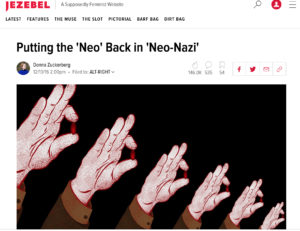
Two months after the film’s premiere in theaters and 3 months before it’s worldwide release, Jezebel, a feminist website I used to fangirl over, published this article called “Putting the ‘Neo’ Back in ‘Neo-Nazi’ with artwork that’s hard to forget. The article was supposedly about the alt-right, but the first hyperlink within the article pointed you directly to The Red Pill movie’s website. I’m sure not by accident.
Side note: After I delivered this speech, I was informed that the author of this Jezebel article is Mark Zuckerberg’s sister, Donna Zuckerberg.
Here’s another cleverly titled article:
“THE RED PILL: I WATCHED IT, SO YOU DON’T HAVE TO” by the Daily Review.

Not far fetched to say, the press really didn’t want people to watch it.
Of course, the title has its positives and negatives. On the negative side, the media has successfully conflated the title with bad things, just like the media successfully conflated men’s rights activists with misogynists, rape apologists, women haters, and anti-women’s rights bigots before letting people actually get to know their true views and stance on the issues.
I know the title has its flaws, also including being confused with a forum on Reddit called r/TheRedPill, a forum that was negligible when I began filming in 2013, but even so, I still stand behind the film’s title.
What is forgotten is that the term “Red Pill” simply means stripping away the conditioning, and I have yet to hear a better title for the film that accurately summarizes the film that was made and the journey I went on while making it.
Still today, I have to consciously overcome my own conditioning.
For example, recently I was mindlessly scanning Twitter, as we do, and someone tagged me in a tweet that read “I love MRAs”. That’s it. It just said “I love MRAs”, and because I was in a mindless trance at that particular moment, I had a very visceral reaction where I was physically put off. I had an instant reflex of disdain for that tweet.
You may be thinking, “How can that be? You made the one film that finally gave MRAs a chance to be heard and respected”. Yes, I know! And when I am consciously engaged with all that I have learned, I know that MRAs – by and large – are people who want to bring men’s struggles to public awareness in hopes of creating a more fair society. But when I’m not consciously engaged with all that I’ve learned, and I’m giving in to how I’ve been conditioned to react for so long, then I turn my nose up at the tweet “I love MRAs”.
You see, for so many years I associated the acronym MRAs with evil, and I’m not being overly dramatic.
My formerly feminist self associated the term “MRA” with “evil person”, “the enemy”. That’s why my TEDx talk is calling “Meeting the Enemy”.
I was trained that they were my enemy and much later I began to realize that my only true enemy was the conditioning that I let takeover me. Even today I still fight against my conditioning, and the metaphor of taking the red pill perfectly describes that on-going journey.
PART IV
Respecting Other’s Journeys
Now that I’ve talked a little bit about my ongoing struggle, I want to discuss respecting other’s journeys and where they are along their path of discovery.
Who here has either lost a relationship or has a rocky relationship with a family member, friend or colleague because you care about men’s issues?
I’m so sorry to hear that and I know how hard it is.
I have quite a few friends and family members where it’s understood that we do not talk about The Red Pill movie or my involvement in this area of gender politics. I even have a family member who, to this day, refuses to watch the film.
I also had a feminist friend who went to a screening of the film with her boyfriend to support me, and the next day she told me that they broke up because he liked the film and she believed that meant he was a misogynist. That was 2 years ago and her and I haven’t spoken since that phone call.
It’s extremely saddening since I believe the film is my greatest work and contribution to the World thus far, but there’s a great divide in my life.
A big part of me wants to share this transformative journey I went on, because it not only led me to have tremendous compassion for men and boys who’ve been through horrific things, but it also led me to have an awakening in my own personal life by applying what I’ve learned to the relationships with my now husband, my father figures, my male friends, as well as my relationship with myself.
The other part of me knows that you can’t force someone to go on a journey they’re not willing to go on. It could be the wrong time, they could have too many vested interests in maintaining the views they have now, they could have biases against hearing men talk about their problems, or biases against documentaries, or against a white, blond, California girl saying, “hey, maybe we should listen to men”. Whatever the reason, The Red Pill hasn’t convinced everyone and many more refuse to watch the film. I’ve had to face this with some of my closest loved ones.
But how do you maintain a relationship with someone who puts their ideological views over their support for you? I’m still trying to figure out the answer to that.
But I’ll share one story that relates to this.
PART V
An Instagram Story
A few weeks ago I started posting Instagram Stories.
Who here doesn’t know what Instagram Stories are?
Congratulations, you have a life! (Just kidding, for those who are instagramers)
Instagram stories are pictures and videos you post on Instagram that vanish after 24 hours. Often times, people will post whatever’s going on that day for them. It’s very Truman Show-esque, like you’re watching your friends’ very own reality show.
I didn’t know how to use it at first and I didn’t know what people cared to see about my everyday life, but I was in a spontaneous mood and decided to go for it. I started with posting innocent videos of me and my husband going to fairs, out to dinner, a few home improvement projects and whatever else we happened to be doing that day.
A few weeks later, I was emptying out my closet and found a piece of artwork someone created of me and my red pill journey.
It was created by an artist named Brent Cherry and it showed me like Alice in Wonderland in the woods after following the white rabbit down the rabbit hole. On the trees are wooden signs listing out over two-dozen different men’s issues.
I just thought it was so cool and creative and beautiful, and because many of the people who follow me on Instagram only know of me from The Red Pill movie, I thought they might like to see it.
Although, I wasn’t sure what to expect from some of my Instagram followers who I know are NOT fans of The Red Pill, but are longtime friends of mine.
The men’s issues listed were absolutely true and in no way were an exaggeration or intended to be inflammatory, they just were. I saw it no differently than a women’s rights poster listing off: single motherhood, rape and sexual assault, reproductive rights, domestic violence, and female genital mutilation. The issues listed on the fan art included domestic violence and reproductive rights, which are the same issues women rights advocates could state, but it also listed the male opposite such as father’s rights and infant circumcision.
In my Instagram video, I read each one of the signs, just pay notice to men’s issues for a moment.
I posted the Instagram story and then I waited…
Sure enough, I quickly received a private message from a longtime friend and staunch feminist.
She first commented by laughing at the word “misandry” being listed as an issue:
Then she wrote, “Forced child support? As in………… child support?” LOL
I read her messages and proceeded to feel anger grow inside of me. Thoughts were RACING through my head that I knew I couldn’t share with her. I was thinking:
“Really? Of all 30 issues listed, she chose to focus on the TWO that offended her and tell me that she finds them offensive? Why can’t she just be supportive? I was a bridesmaid in her wedding, we’ve been through so much together. She knows my heart and that I’ve always been a champion for fairness and standing up for the underdog. Wouldn’t that make her more open-minded to these issues because she hears about them from me after I spent years researching this intently? It’s not like I’m an “other”, I’m one of her best friends and she’s one of mine. Even if she has different political opinions than me, shouldn’t our friendship override those differences? I never comment to her when she posts political things I disagree with or I know to be untrue.”
And for an hour I was spiraling.
I had to let myself calm down before responding. After I became cool as a cucumber, I reread her messages and realized they weren’t that bad. Sure, she laughed at the word “misandry” as an issue, but I should have expected that rather than be surprised and offended by her reaction. It’s the time we live in right now, and before I made The Red Pill, my reaction would have been the same as hers.
As for her questioning “forced child support” as a valid issue, and the absence of her showing compassion for the other 28 issues listed, I realized that I was foolishly taking offense to her offense rather than seeing her comment as a gift.
A gift?
Yes, a gift!
Instead of making assumptions, I should take her comment as an open door to discuss something she may never have learned about otherwise.
Perhaps she sincerely wanted to know why “forced child support” is a valid issue, and while I took it as her being snarky, it could have just been her way of keeping it light-hearted while inquiring about something uncomfortable.
It finally dawned on me to not be offended by her being offended, but to see this as an opportunity to shed light on her confusion.
I quickly searched forced child support and instantly found a long-form journalist investigation done by Kim Russell with ABC News, see here and here.
I was SO thankful to find a seemingly mainstream, reputable, investigative report published recently (2017) to share with my friend. She couldn’t dismiss it as outdated, politically-driven propaganda.
The report highlighted a loophole in the law where a woman can list any man on her child’s birth certificate without proof that the man is in fact the child’s father. That man is then forced to pay child support for the child even after a DNA test proves that the child is not his. In this report, four men’s personal stories were detailed, three of which were non-white. I took note of this because I know my friend well enough to know that if all four were white men she would think even less of the study and the importance of the issue. That’s just where her mind goes right now.
I responded to her message explaining that forced child support is also called “Dad’s By Default” and happens when men are legally forced to pay child support for children that DNA tests prove are not biologically theirs. If the men don’t pay, they could be imprisoned. I included the link to the report and felt good about not responding to her anger with my anger, but repositioned the conversation to deepen it about the issues.
A day went by before I got her response. Then she wrote:
“WOAH. I’ve never heard of that or ever met any men who’ve had that happen to them, but I have met many women who have been stiffed on child support.”
… Sounds honest and fair enough.
What I didn’t tell her was that there are also many other forms of forced child support that I believe are ethically wrong and should be human rights violations, such as forcing a rape victim to pay child support.
Yes, there are men who are forced to pay child support to the older woman that raped them when they were underage.
There are also men who are forced to pay child support after the woman tricked him into her getting pregnant by lying about their birth control, this is called paternity entrapment and happens a lot more often then people realize.
There are also many instances of low-income or unemployed fathers not being able to pay child support, leading them to prison while their unpaid child support continues to accumulate! A difficult cycle to break, and one that leaves children without access to their fathers.
But for my friend, it’s best to start with one “WOAH moment” at a time.
After all, it took me years of collecting WOAH moments to finally be where I am today, and I have hundreds of people to thank for their patience towards me when I was struggling to accept information that conflicted with my long-held beliefs.
PART VI
Changing Hearts And Minds
I spoke earlier about my previous film work being largely focused on women’s issues and LGBT issues, and there’s a very common saying in human rights work, or any kind of societal cause, which is: “the mission to change hearts and minds.”
It’s a bit overused now, but I can see why it caught on. It’s a good rallying call. It admits that there’s an information gap and it identifies the solution as needing to change hearts and minds – needing to change the emotions around the cause and the intellectual understanding about the cause.
There’s something that I hope we all understand here: men and boys issues are NO DIFFERENT from any other human rights issue, except that they are not considered human rights issues.
Right now, it is sadly in-fashion to mock, laugh at, dismiss, and proactively silence people who are speaking up about these issues, and that’s why we need to change hearts and minds.
But how does one do that?
Clearly I still struggle with it in my personal life. In fact, for me, it was easier to make a 2 hour movie about these issues then to try to convince a family member who refuses to see differently. It’s something I’m still working on.
But in hopes of giving you all ideas on how to talk to people that may not understand, I’d like to share one major turning point that I had while making The Red Pill.
This one encounter made me take pause and reconsider my long-held beliefs at a point when I was very defensive and unwilling to.
PART VII
Finding Common Ground
Who here knows of Erin Pizzey?
If you don’t know of this incredible woman, she started the first ever women’s shelter in the world in 1971, because she saw a need for women to have refuge while escaping a violent home. What she quickly found out was that there was a need for a men’s shelter as well, because she saw men who were being horribly abused, and to her it was no question that they deserved the same care and access to resources.
However, Erin quickly realized that the powerful and growing women’s movement wanted her to stick to a script that said: “women are innocent victims of men’s violence.” Period. But Erin knew that wasn’t the whole story, because she knew men that were being abused by women and she also knew that of the first 100 women to enter her shelter, 62 of them were just as violent as the men they left and were violent towards their children.
I went to interview Erin Pizzey because she’s a men’s rights activist and many MRAs consider her to be one of their idols.
I thought, “if she opened the very first women’s shelter, why have I never heard her name in my feminist studies?” I later found out why. She’s been completely vilified by modern day feminists because she’s a whistleblower.
In her 2007 Daily Mail article, she wrote,
In a matter of months, the feminist movement hijacked the domestic violence movement, not just in Britain, but internationally…
They came out with sweeping statements which were as biased as they were ignorant. “All women are innocent victims of men’s violence,” they declared.
… the feminist refuges (also known as shelters) continued to create training programmes that described only male violence against women. Slowly, the police and other organisations were brainwashed into ignoring the research that was proving men could also be victims.
– Erin Pizzey
2007
I met with Erin in Los Angeles on a cold Saturday night. She was the first female men’s rights activist that I interviewed for The Red Pill.
On my drive there, I wondered what she should be like. I actually expected her to be a women-hater. It’s as if her current label of men’s rights activist overshadowed any credit I would give her for having once been a pioneer for women’s rights.
Of course, I see the irony that today, many feminists think that way about me, that my work on The Red Pill cancels out any work I did previously for women’s rights.
But I met with Erin Pizzey, armed with pages of questions and we talked for 4 hours straight.
What people don’t know, is that the first hour and a half of our interview, we talked about women’s rights and we bonded over our mutual concern and compassion for female victims of: domestic violence, sexual assault, rape, children who’ve been abused, and we talked about how she was violently abused as a child by both of her parents and why she started the first women’s refuge.
What was spoken in those first 90 minutes made me listen to her more than any other men’s rights activist I had met at that point, because I felt she didn’t dismiss female victims.
And I’m not saying other men’s rights activists did dismiss female victims, the didn’t, we just never talked about that unless it was a quick aside, like me saying, “well what about female victims of rape?” and then the MRA would respond by saying, “of course that’s an atrocity, but what we’re saying is that men are raped, too, and nobody cares”. So they would focus on men’s issues and the problems with feminism, which I now understand was because it’s not spoken about enough and to their credit, at that time I didn’t yet know about those arguments, so they had to spend their time explaining those to me.
But when Erin showed me at length her passion for female victims, and then she showed me her passion for male victims, that was a big turning point for me on my red pill journey. It was the first time I met a female standing up for men’s issues and she wasn’t just any woman. I saw her as a hero for women, as well as for men, and I realized:
You don’t have to choose one or the other, you can show concern for all who have suffered.
I share this because I want to suggest to you that when you’re speaking to a family member, friend or colleague, or even a stranger online, about men’s issues – and they’re resistant to hearing it – meet them halfway! Find common ground. Talk to them about why women’s issues are important as well. It may feel like you’re wasting time or breath talking about issues that everyone already knows about, and every news station and late-night talk show already covers those stories over and over again, but please – consider investing the time in gaining their trust in you by going above and beyond to let them know that you’re not dismissing women’s issues or saying that women as a sex are the cause of the world’s problems.
I know this from my own experience of being a staunch feminist in the past. You really have to go out of your way to relieve feminists of their fears.
Their fears being that YOU believe: that women are the cause of men’s problems, or that YOU believe that all women are evil, or that women are the oppressors, or that women have all the power, or that women shouldn’t work, or women deserve to be abused or raped or a million other outrageous beliefs that they think YOU believe. I know those fears sound illogical, but those fears are promoted and fed everyday by the media, and entertainment, and in gender studies and by celebrity influencers… so spend the time to relieve them of their fears about you.
Also know that many people who become involved and passionate about gender issues are that way because they have a belief about themselves and who they are. It’s not just a political side they’re choosing, often times it’s their personal identity. They may identify as a victim of a horrific experience from their past, or they may identify as an oppressed class because of the way they were born based on their gender, skin color, sexual orientation or otherwise.
This is what makes it so hard because while you may believe you’re debating their political theory about gender, they may believe you’re attacking their identity.
So we have to use our words carefully, we have to meet everyone where they are on their journey.
Another thing to realize is that you cannot force someone to hear a message they are not ready to receive. At the same time, never underestimate the power of planting a seed.
Erin Pizzey didn’t change my mind within that 4 hour conversation, but here I am 6 years later saying: that one conversation was a major turning point for me.
So be gentle, be respectful, and be patient.
We’re all on our own journey, interacting with people who are at different points on their journey.
If you encounter someone who seems angry, like I did with my friend on Instagram, only respond while in a calm state.
And while you know much more today than you did years ago, be open to the fact that you still don’t know as much as you can, about others, but especially about yourself. Pay attention to who makes you uncomfortable, because they are your teacher. Seek out what you are supposed to learn from them.
Thank you for your time.
——-
To watch a video of the entire speech, as well as the Q&A that followed, click here.
The Q&A included me answering the one question that I get asked the most, and had never answered until this moment in the video: I was asked, “What is your next project?” and I answer that at the 1:28:35 mark.
Thank you for reading. Please, feel free to contact me if you are interested in hiring me as a speaker, and please feel free to recommend me as a speaker to any conference, institution, or organization that you may see fit. I write all of my own speeches and always try to share new information that is applicable to the present social climate. I would also like to sincerely thank my friend and editor, Nikita Coulombe, for helping me see new ways of expressing my ideas. This speech, and all of my other speeches, have greatly benefited from her keen eye for detail.
One more thing, I don’t sell advertisement space on my blog and I don’t do sponsored posts, therefore I don’t make any money from writing, but if you would like to support my work, please support my Patreon, Subscribestar or donate directly to me through my website or PayPal. Your financial support goes a long way right now since I am starting a new project and don’t have any outside funding for that.
And thank you to all of my current supporters. I can never thank you enough, but to word it simply: you are my heroes. I am so grateful.
Related Posts
4 Comments
Leave a Reply Cancel reply
Recent Posts
Archives
Recent Comments
- Serg on My Dear Friend Was Murdered
- Marianne B. on My Dear Friend Was Murdered
- gush on My Dear Friend Was Murdered
- Annie on My Dear Friend Was Murdered
- Gregory Rolando on My Dear Friend Was Murdered

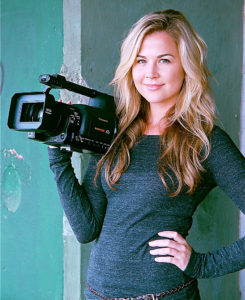
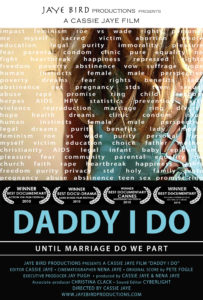

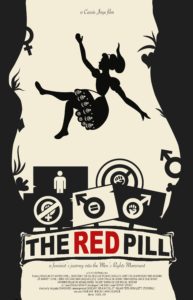
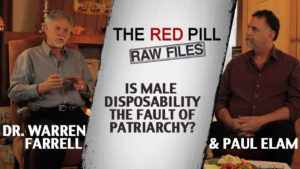

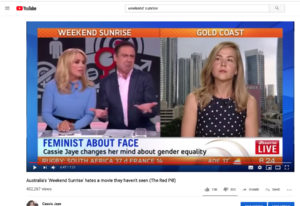
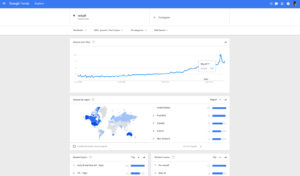
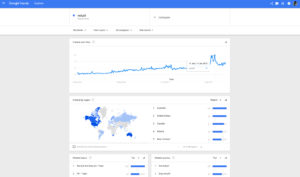
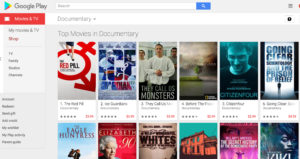
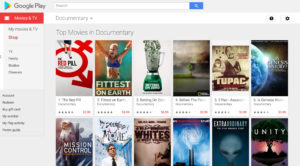

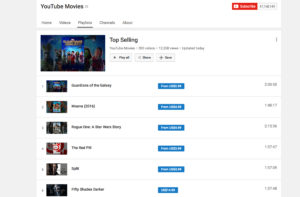

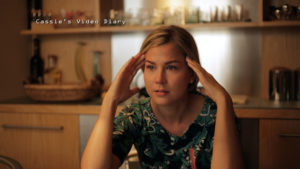

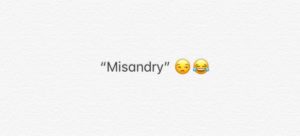
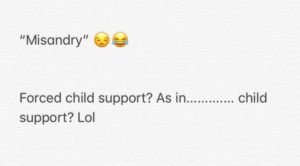

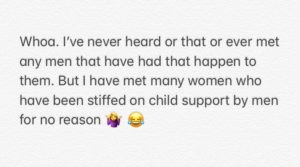
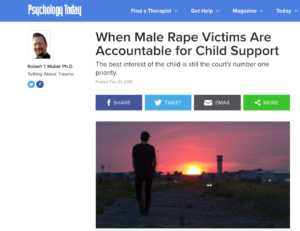

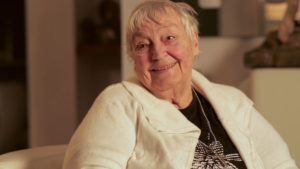
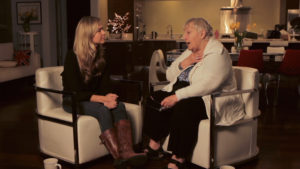



Hi Cassie,
I haven’t seen THIS yet, but I just finished The Red Pill last night, after seeing your TED talk about it.
Wow. Thank you for being a “voice for men” that reached such a wide audience, and for fearlessly documenting your own personal struggle with the issues presented in the documentary.
The world is a better place with you in it, and your efforts are not unnoticed.
Thank you again, and I look forward to viewing the keynote speech!
Also – I tried to find some of the merch you mentioned – shirt, etc – but couldn’t locate any.
Where might I acquire some? 🙂
threaten to sue ahead of the event if there are any subsequent problems with – in this case – audio file-playback, Cassie… I’ve seen this problem emerging ,more and more in resent times, for example to Jordan Peterson, and there are no excuses. The rule of thumb is “record everything’, not just one channel of audio so if a problem emerges there are fall-back options. I’m sorry, but old-schoolers like me would have been fired on-the-spot if this happened on their watch, which is why it ‘didn’t’ used to happen back-in-the-day…. Very best wishes to you and your husband…..
Dearest Cassie. I as a man, can only say, when life throws us these despairing moments, the strong will persevere.. And you are one of these strong individuals. I can only imagine what it was like and am sad about your ordeal. My warmest thoughts, prayers and positive karma are all I can provide. As a former firefighter/EMT, I theorize that a woman’s body sometimes takes the first pregnancy and begins the process for her body to adapt to this. My sisters both had miscarriages of their first fertilized egg, they then had two successful pregnancies. I have 4 lovely niece and nephews. I’m certain your next will be successful and positively life changing. Keep the faith and positive thoughts..